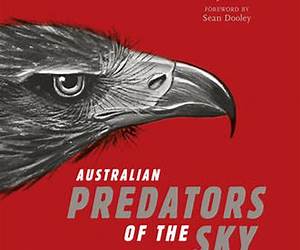Australian Predators of the Sky By Penny Olsen
Skytest realistic animals and predators
 Our relationship with the birds of prey has always been conflicted Raptors are admired for their strength and independence but despised for their depredations on livestock and favourite garden birds while the owls are at once respected for their wisdom and watchfulness and feared for their mournful cries and association with darkness and ill omen The book begins with a fascinating chapter on the European discovery of birds of prey in Australia for example the earliest sightings of eagles by William Dampier s expedition in 1699 in south western Australia and Captain James Cook s reports of kites hawks eagles and owls at Endeavour Bay in Queensland in 1770 the naming and describing of species in the nineteenth century and John Gould s visit to Australia to describe and illustrate its birds including the birds of prey which filled the first of the seven volumes his The Birds of Australia in the 1840s Another chapter describes the physical characteristics of birds of prey their distribution their hunting methods and other ecological features For each species a distribution map is provided as well as the origins of its scientific name Several full colour illustrations of the species by various artists are accompanied by intriguing notes about the bird For example The Black breasted Buzzard uses a stone to smash eggs of ground nesting birds Early settlers named the Nankeen Kestrel because it was the colour of a sturdy brownish yellow cotton cloth made in Nanking China The Black Kite uses bait to lure in fish and crustaceans and has learned to flip Cane Toads into their backs to avoid their poison glands The Australian Hobby a falcon inhabits a vacated nest of a crow instead of building its own The Peregrine Falcon can reach speeds of 322 km hr when diving after prey in the air The Barking Owl with its shrill woman like sobbing scream is the possible source of the myths of the bunyip a creature that inhabited swamps and ate women The long legged Eastern Grass Owl roosts and nests on the ground and has a nest with an approach run Australian Predators of the Sky comprises over 200 striking paintings lithographs and engravings of all 34 Australian species 25 diurnal birds of prey and nine owls From odd looking first depictions to stunning detailed portrayals of the species the illustrations cover than two centuries of bird art selected from the National Library of Australia s collection The artists include George Raper and John Hunter First Fleet naval officers Sarah Stone John and Elizabeth Gould Henry Constantine Richter Henrik Gr nvold Ellis Rowan Neville Henry Cayley Lionel Lindsay Lilian Medland Ebenezer Edward Gostelow and recently Betty Temple Watts Frank Knight and Jeff Davies Australian Predators of the Sky
Our relationship with the birds of prey has always been conflicted Raptors are admired for their strength and independence but despised for their depredations on livestock and favourite garden birds while the owls are at once respected for their wisdom and watchfulness and feared for their mournful cries and association with darkness and ill omen The book begins with a fascinating chapter on the European discovery of birds of prey in Australia for example the earliest sightings of eagles by William Dampier s expedition in 1699 in south western Australia and Captain James Cook s reports of kites hawks eagles and owls at Endeavour Bay in Queensland in 1770 the naming and describing of species in the nineteenth century and John Gould s visit to Australia to describe and illustrate its birds including the birds of prey which filled the first of the seven volumes his The Birds of Australia in the 1840s Another chapter describes the physical characteristics of birds of prey their distribution their hunting methods and other ecological features For each species a distribution map is provided as well as the origins of its scientific name Several full colour illustrations of the species by various artists are accompanied by intriguing notes about the bird For example The Black breasted Buzzard uses a stone to smash eggs of ground nesting birds Early settlers named the Nankeen Kestrel because it was the colour of a sturdy brownish yellow cotton cloth made in Nanking China The Black Kite uses bait to lure in fish and crustaceans and has learned to flip Cane Toads into their backs to avoid their poison glands The Australian Hobby a falcon inhabits a vacated nest of a crow instead of building its own The Peregrine Falcon can reach speeds of 322 km hr when diving after prey in the air The Barking Owl with its shrill woman like sobbing scream is the possible source of the myths of the bunyip a creature that inhabited swamps and ate women The long legged Eastern Grass Owl roosts and nests on the ground and has a nest with an approach run Australian Predators of the Sky comprises over 200 striking paintings lithographs and engravings of all 34 Australian species 25 diurnal birds of prey and nine owls From odd looking first depictions to stunning detailed portrayals of the species the illustrations cover than two centuries of bird art selected from the National Library of Australia s collection The artists include George Raper and John Hunter First Fleet naval officers Sarah Stone John and Elizabeth Gould Henry Constantine Richter Henrik Gr nvold Ellis Rowan Neville Henry Cayley Lionel Lindsay Lilian Medland Ebenezer Edward Gostelow and recently Betty Temple Watts Frank Knight and Jeff Davies Australian Predators of the Sky
| Australian Predators of the Sky By Penny Olsen |
| 0642278563 |
| 9780642278562 |
| English |
| 216 |
| Paperback |